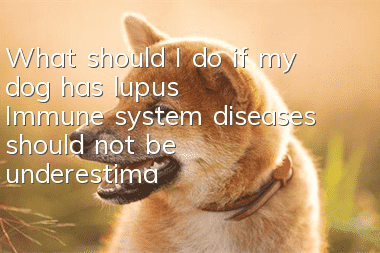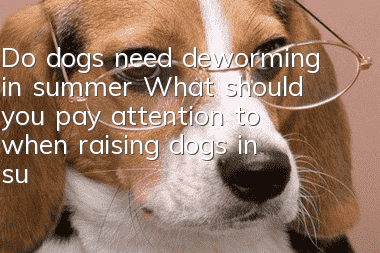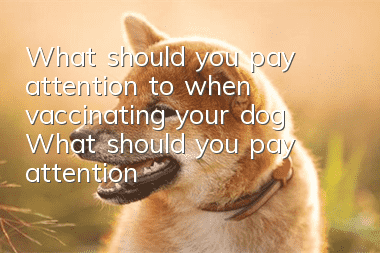How to treat parvovirus in dogs

Dog parvovirus needs to be treated by infusion. The main treatment principles include anti-viral, anti-secondary, symptomatic treatment and supportive treatment. First of all, antiviral and anti-secondary drugs mainly use monoclonal antibodies, interferons and other drugs to directly neutralize and inhibit virus reproduction. Secondly, symptomatic treatment mainly includes antivomiting, hemostasis, and infection control. Finally, supportive treatment mainly includes rehydration, correction of electrolyte imbalance, and intravenous nutritional supplementation. Parvovirus infection is a disease with a high fatality rate for dogs. It is recommended that owners take their dogs to a pet hospital for treatment in a timely manner.
There is currently no specific treatment for parvovirus infection. Common treatment methods are mainly symptomatic treatment based on the specific situation of the dog, which mainly include the following aspects.
1. Antiviral treatment
Parvovirus is a kind of virus. There is no good treatment for the virus. Generally, dogs can passively acquire immunity through the use of interferon, canine parvox hyperimmune serum and other drugs to resist the virus.
2. Anti secondary infection
Parvovirus mainly damages the digestive system and causes damage to the intestinal mucosa. Generally, antibiotics can be used to control inflammation and prevent secondary infections.
3. Symptomatic and supportive treatment
Since canine parvovirus is a viral disease, symptomatic and supportive treatment is generally adopted. For example, for dogs with symptoms of vomiting, diarrhea, and bloody stools, antiemetic, antidiarrheal, and hemostatic injections can be given accordingly. For symptoms such as dehydration, loss of appetite, and anemia in dogs, corresponding treatments such as intravenous electrolyte solutions, nutrient solutions, and blood replenishing injections are given. Supportive treatment mainly adjusts the dog's condition by replenishing water, adjusting electrolytes and acid-base balance disorders, stopping bleeding, and stopping diarrhea.
Note: During the treatment, no food or water is required to prevent food from entering the stomach and aggravating the dog's vomiting symptoms. Then rehydration treatment will be performed to supplement sufficient protein and water. What needs to be paid attention to is to keep the dog warm and thoroughly disinfect the areas and utensils where the dog moves.
- Symptoms of Rheumatism in Dogs What conditions can cause rheumatism in dogs?
- What are the reasons why dogs are obese? Do you know these four reasons?
- Symptoms of protein deficiency in dogs How to supplement protein
- How to treat pica in dogs? Have you seen your dog eating randomly?
- Why do dogs need their nails trimmed? Do you trim your dog’s nails?
- What are the uses of probiotics? What should you pay attention to when feeding your dog probiotics?
- How long does it take for a dog to die from heat stroke? How many hours does it take for a dog to die from heat stroke?
- Differences between Shiba Inu and Akita Inu. Pay attention to these points and it’s super easy to tell the difference!
- What are the reasons for dogs’ gastrointestinal problems? Dogs must be fed regularly
- How to treat urticaria in dogs Symptoms of urticaria in dogs



